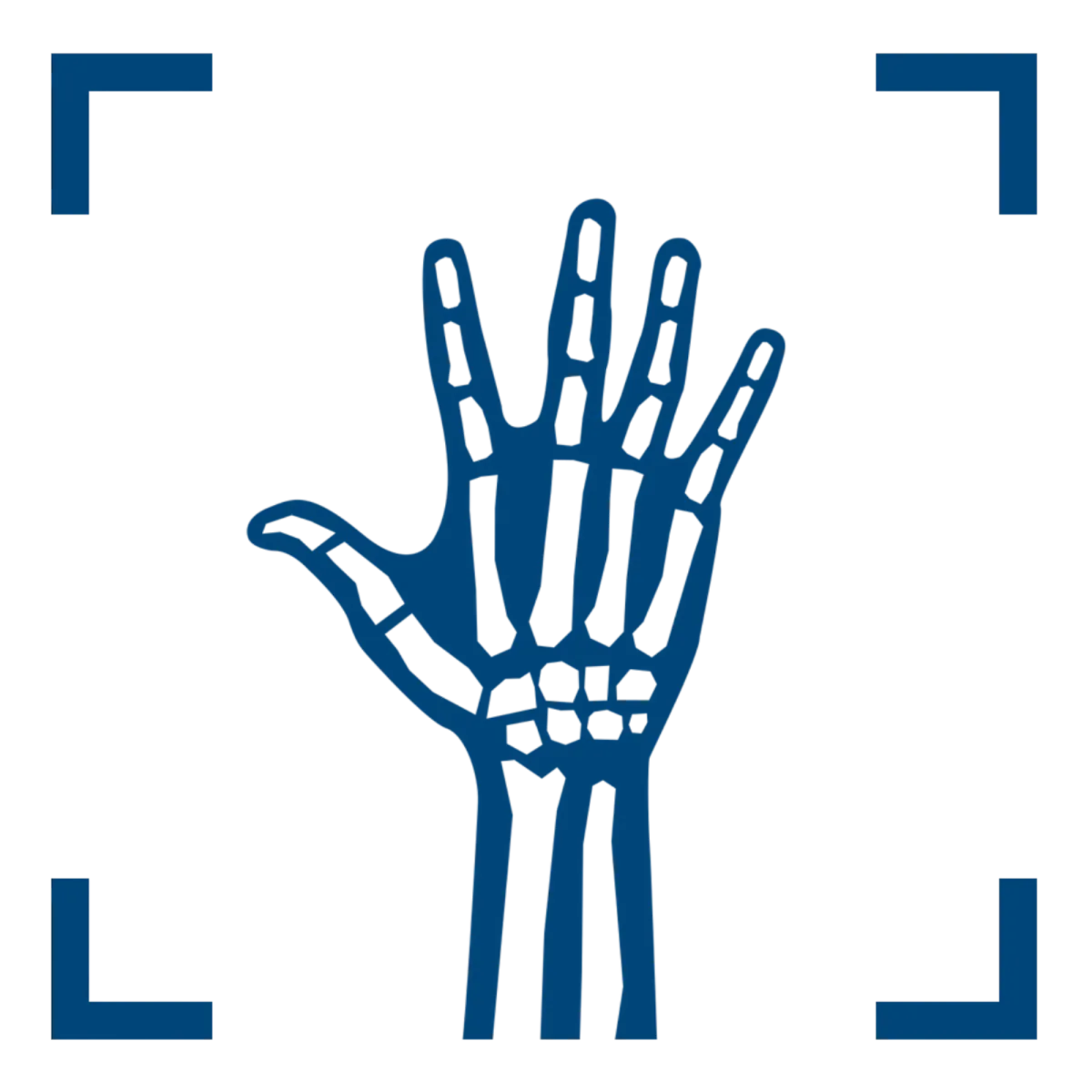Plantar Fasciitis
World-Class Experts
We are the oldest and largest private radiology group in the Omaha/Council Bluffs area, offering patients world-class expertise in the areas of:
- Abdominal imaging
- Breast Imaging
- Musculoskeletal Imaging
- Neuroimaging
- Nuclear medicine/molecular medicine
- Pediatrics
- Trauma
- Vascular and interventional radiology
Reliable Results
The accuracy of your diagnosis largely hinges on three things:
1) the technology of your diagnostic machines,
2) the experience of the person performing your tests, and
3) the specialization and experience of the radiologist who reads your reports
We have you covered with our top-of-the line equipment and the most experienced radiology team in the area.
You're in good hands!
What is Plantar Fasciitis?

Plantar fasciitis is an inflammatory condition affecting the plantar fascia, a thick band of connective tissue that extends from the heel to the toes along the bottom of the foot. This condition commonly causes heel pain and discomfort, particularly with the initial steps taken in the morning or after periods of rest. The inflammation of the plantar fascia can result in sharp or aching pain, impacting mobility and overall foot function.
Plantar fasciitis is one of the most common conditions causing heel pain. It involves inflammation of the plantar fascia — a tough, fibrous band of tissue that runs along the sole of the foot. The plantar fascia attaches to the heel bone (calcaneus) and to the base of the toes. It helps support the arch of the foot and has an important role in normal foot mechanics during walking.
Tension or stress in the plantar fascia increases when you place weight on the foot, such as withstanding. The tension also increases when you push off on the ball of the foot and toes. Both of these motions occur during normal walking or running. With overuse or in time, the fascia loses some of its elasticity or resilience and can become irritated with routine daily activities.
What are symptoms of Plantar Fasciitis?
Symptoms of plantar fasciitis include:
Heel Pain
A sharp, stabbing pain, especially noticeable with the first steps in the morning or after periods of inactivity
Foot Arch Pain
Discomfort or aching in the arch of the foot
Pain After Activity
Increased pain following prolonged standing, walking, or physical activity, often improving with rest
Tenderness
Sensitivity at the area where the plantar fascia attaches to the heel bone
These symptoms generally develop gradually and can significantly affect daily activities and overall foot function.
The pain of plantar fasciitis usually increases gradually and is typically felt near the heel. Sometimes the pain can be sudden, occurring after missing a step or jumping from a height. The pain tends to be the worst when you get up in the morning or after other periods of inactivity. That’s why it is known as first-step pain. The degree of discomfort can sometimes lessen with activity during the day or after warming up but it can become worse after prolonged or vigorous activity. The pain may also appear more intense in bare feet or in shoes with minimal support.
How is Plantar Fasciitis diagnosed?

Plantar fasciitis is diagnosed through a comprehensive approach involving a detailed review of the patient’s medical history and symptoms, including the nature and location of the pain. A physical examination is conducted to assess tenderness at the heel and along the plantar fascia, as well as to evaluate foot function and gait. While imaging studies such as X-rays or ultrasounds are not always necessary, they may be used to exclude other conditions like fractures or to visualize inflammation in the plantar fascia. This diagnostic process helps confirm plantar fasciitis and distinguish it from other potential causes of foot pain.
Plantar fasciitis is one of many conditions causing heel pain. Some other possible causes include:
Nerve compression in the foot or in the back
Stress fracture of the calcaneus
Loss of the fatty tissue pad under the heel
Plantar fasciitis can be distinguished from these and other conditions based on medical history and examination by a physician.
Heel spurs are often wrongly thought to be the sole cause of heel pain. Although they are common, they are nothing more than the bone's response to traction or pulling forces from the plantar fascia and other foot muscles. Heel spurs often don’t cause any pain. A truly enlarged and problematic spur requiring surgery is rare.
How does MIC treat Plantar Fasciitis?
Treatment for plantar fasciitis typically involves a combination of approaches aimed at reducing pain and inflammation while promoting healing. Common treatments other than rest, ice, stretching, and medication include:

Footwear Modifications
Wearing supportive shoes or using orthotic inserts to provide better arch support and cushioning
Physical Therapy
Undergoing physical therapy to strengthen foot muscles and improve foot mechanics
Night Splints
Using night splints to keep the foot in a dorsiflexed position to gently stretch the plantar fascia while sleeping
Injections
Receiving corticosteroid injections to reduce severe inflammation and pain if other treatments are ineffective
Surgical Intervention
In rare cases where conservative treatments fail, surgery may be considered to release the tension in the plantar fascia
In general, the longer the symptoms have been present and the more severe the pain, the longer the treatment may take. Additionally, high-demand athletes, such as cross-country or marathon runners, may require a longer course of treatment.
Plantar fasciitis treatment options include:
Stretching and Physical Therapy
Stretching is one of the best treatments for plantar fasciitis. Stretching should be focused on the plantar fascia and the Achilles tendon. A physical therapist can show you stretching exercises that you can repeat at home several times a day. Along with stretching, the exercises can also strengthen your lower leg muscles, helping stabilize your ankle.
Icing and Medication
Icing the sore spot on your sole several times a day may help with pain and inflammation. Your doctor may also recommend nonsteroidal anti-inflammatory medication.
Rest, Activity Modification and Orthotics
It helps to keep the weight and stress off your foot, at least partially, while your plantar fascia is healing. Your doctor may recommend a combination of the following:
Changing to a more shock-absorbing exercise surface
Switching to shoes with arch support or trying heel cups or other orthotics to cushion the heel
Applying athletic tape to your foot to support muscles and ligaments
Wearing night splints to continue stretching your foot while you sleep
Decreasing distances and duration of walking or running
Switching from jumping or running to swimming or cycling
Shock Wave Therapy
This therapy is based on delivering low-energy or high-energy shock waves to a specific area. The shock waves create microscopic trauma, which triggers a healing response from the body. This process is thought to help promote healing in the plantar fascia.
Steroid Injections
In most cases, plantar fasciitis improves after a few months of stretching. If your symptoms continue after two months of treatment, your doctor may recommend steroid injections to decrease inflammation.
Gastrocnemius Recession
Surgery is rarely needed for plantar fasciitis but is an option in severe cases. The surgery for plantar fasciitis is called gastrocnemius recession or gastrocnemius release. The goal is to lengthen the gastroc tendon, which is a part of the Achilles tendon. There is a known connection between the tension in the Achilles tendon and the tension in plantar fascia. This surgery may be recommended for patients who have an equinus contracture — tightness in the calf muscles and tendons that leads to the inability to hold a foot in a neutral position (a 90-degree angle to the leg).
About Your Plantar Fasciitis Treatment
Injections
For plantar fasciitis, corticosteroid injections may be used to provide temporary relief from severe pain and inflammation. The procedure involves injecting a corticosteroid medication directly into the area where the plantar fascia attaches to the heel. This helps to reduce inflammation and alleviate pain, allowing for improved mobility and participation in rehabilitation activities. While effective, the benefits of corticosteroid injections are typically short-term, and the procedure may need to be repeated depending on the patient's response.
Simplified summary of injections
For severe plantar fasciitis pain, corticosteroid injections can be given directly into the heel to reduce inflammation and provide temporary relief. This helps with pain and allows for better participation in physical therapy and other treatments.
Surgical Intervention
Surgery for plantar fasciitis is generally considered only after conservative treatments have failed. One common surgical approach is a plantar fasciotomy, where a portion of the plantar fascia is surgically released to relieve tension and reduce pain. This procedure is usually performed using minimally invasive techniques to minimize recovery time. Surgery aims to provide long-term relief by addressing structural issues that contribute to persistent pain. However, it carries risks such as infection, scarring, and potential complications related to anesthesia and the surgical site.
Varicose
Veins
Pelvic
Pain
Non Healing Wounds
Plantar
Fasciitis
Uterine
Fibroids
Benign Prostatic Hyperplasia
Services



CT Scan
Minimally Invasive Therapies
Molecular Medicine



MRI
Ultrasound
Women's Imaging
M-F: 8:00am-5:00pm
Extended Hours Available
Upon Request



















